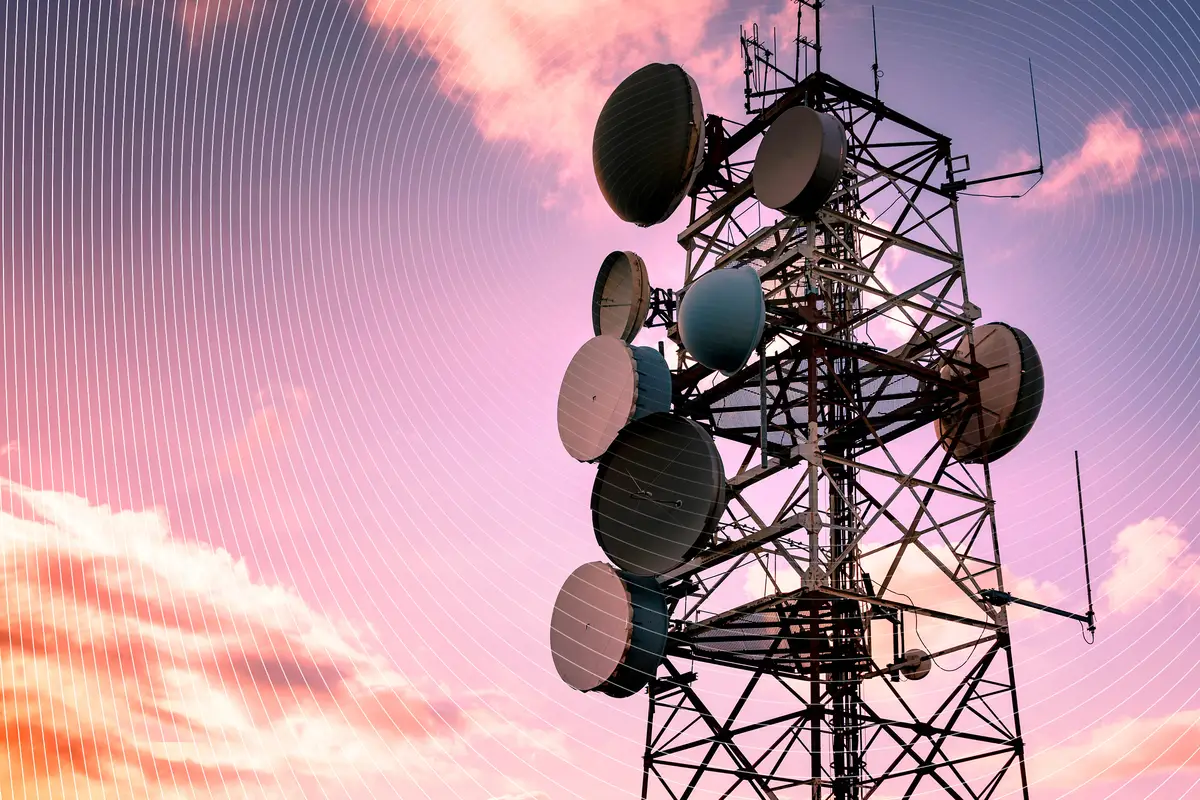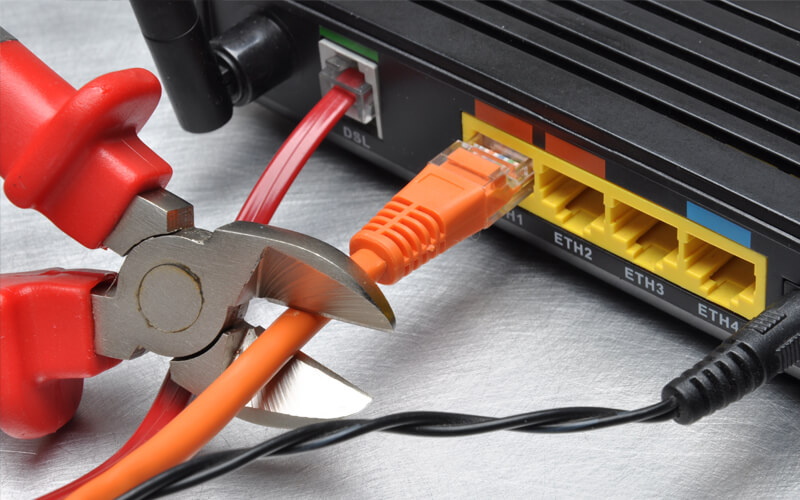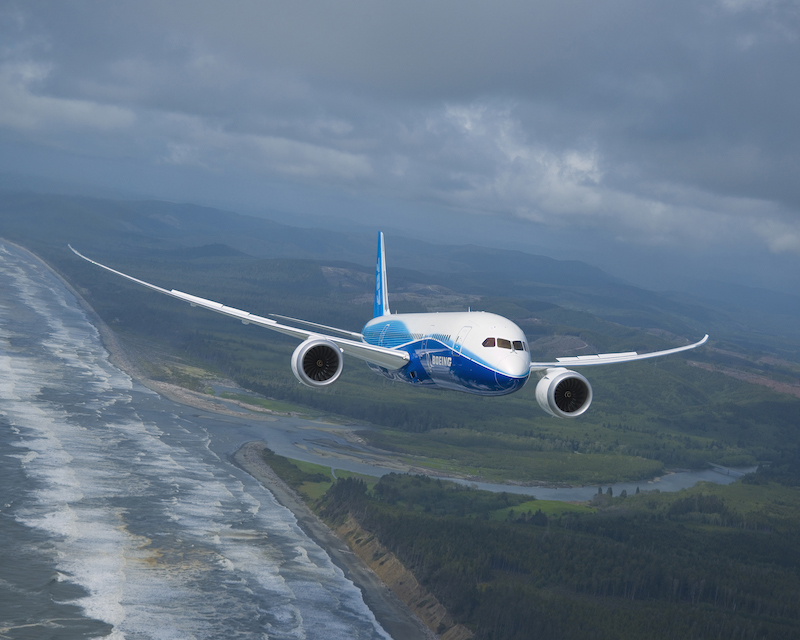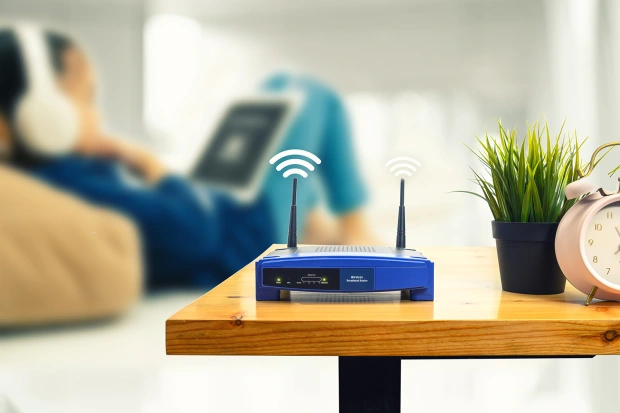
Private 5G is technology that can be used in local area networks. Not to be confused with the public 5G connectivity offered by telephone companies, private 5G is used in corporate campuses, office buildings, factories and warehouses, event venues, and airports, either instead of or in addition to Wi-Fi.
According to an unpublished survey from research firm Forrester, 44% of corporate telecommunications decision-makers plan to create private 5G networks. Industries with significant private 5G plans include water and waste, high-tech manufacturing, and retail and wholesale. Other areas where private 5G might crop up include stadiums and construction sites, says Forrester analyst Andre Kindness. “They’re prime for 5G technologies.”
The technology is very new, and few enterprises have the expertise to deploy it themselves, so most companies that want to use private 5G are turning to service providers to help set up the networks. Providers include telcos, private wireless network vendors, original equipment manufacturers, systems integrators, and major cloud players.
Enterprises will have to decide what kind of provider makes the most sense given the scale and complexity of their environments. There are pros and cons to each private 5G approach, and service levels can vary dramatically.
Telcos lead with 5G skills, spectrum licenses
An uptick in provider interest is one factor that’s driving private 5G adoption. A growing number of wireless carriers are beginning to offer private 5G network services to enterprise customers. The Wells Fargo Center in Philadelphia recently rolled out 5G using Comcast Business to help set up the stadium network, for example.
The major global wireless carriers, such as AT&T, Comcast, Orange, Telefonica and Verizon, have several advantages when it comes to private 5G networks.
First, they have the in-house expertise on how 5G works and access to all the needed hardware. Second, they have the scale and international reach to support the biggest multinational enterprises, with all the necessary local partners and expertise. Finally, they own the spectrum.
Enterprises can use shared Citizens Broadband Radio Service (CBRS) spectrum or unlicensed spectrum such as 5G New Radio Unlicensed (NR-U), but there are times when those aren’t appropriate or are too difficult to deploy.
Verizon was the largest buyer of CBRS 5G spectrum in the U.S. in 2020, buying nearly $2 billion dollars’ worth of spectrum rights, followed by Dish Network with just under $1 billion, Charter with $464 million, and Comcast with $458 million.
Private vendors offer turnkey 5G managed services
Another option is vendors that are specifically focused on rolling out 5G networks, such as CTS, Boingo, Kajeet, and WWT. These companies can provide network design and installation, as well as ongoing security and operations monitoring and management.
“Private wireless providers offer an end-to-end, turnkey managed service and run the private network behind the enterprise firewall,” says Brian Watkins, executive vice president for sales and business strategy at Betacom, a wireless-infrastructure company that recently added 5G-as-a-service to its suite of offerings. “The enterprise maintains control and ownership of their data, and they have unlimited data usage”
When buying 5G from a carrier, enterprises might incur ongoing data costs. Plus, they might still have to buy hardware, software, and services they need from other vendors, complexities that could be deal breakers, according to Betacom CEO Johan Bjorklund. (MxD set up a private 5G network at its manufacturing innovation facility in Chicago with help from Betacom.)
“The average enterprise doesn’t have the scale to do this,” he says. “They’d have to add a lot of headcount or do training. What they want at the end of the day is a functional network that solves the business problems.”
Hardware vendors and service providers team up
According to IDC analyst Rohit Mehra, the most common 5G deployment strategy starts with traditional networking suppliers including Cisco, Ericsson, Fujitsu, Huawei, Nokia, Samsung, and ZTE.
“Nokia, Ericsson, and Samsung have a major play, globally,” Mehra says. “With Huawei and ZTE, much of their success is limited to greater China.” IDC hasn’t published 5G market-share numbers yet because the industry is still in its infancy, he says.
In order to acquire licensed spectrum, enterprises would need to look for a package where a telco has some role in the shared offering. For example, Nokia has a partnership with AT&T.
Multinational organizations could select a vendor with a global presence or at least a presence in the countries the company is interested in, Mehra says, and let the vendor dictate the in-country partnerships.
Networking vendors are also starting to offer other pieces of the 5G puzzle.
Vendors such as Ericsson and Nokia offer hardware and some of the software required to run private 5G networks in an attempt to become one-stop solutions providers, says Jagadeesh Dantuluri, general manager for private and dedicated networks at Keysight Technologies, which provides hardware and software for private 5G solution providers.
“They do not want the end customers to look aside for any other vendors,” he says.
System integrators bring customization options
System integrators like Accenture, Capgemini, and IBM are also helping enterprises deploy 5G networks.
For example, Accenture recently partnered with Google Cloud and Australian telecom Telstra to build a private 5G network at Marvel Stadium, an arena owned by the Australian Football League.
Working with integrators can offer large customers more customization options, says Chris Christou, senior vice president and expert on cloud and mobility at Booz Allen Hamilton.
“And there’s more of the opportunity to work directly with equipment manufacturers and chipset manufacturers for specialized features you want in the network,” Christou says. “There’s more tailoring to your specific use case.”
However, many system integrators lean more towards the consulting side, rather than deploying physical infrastructure, says Arun Santhanam, Capgemini’s vice president for telco.
System integrators often work directly with equipment vendors and partner with carriers when 5G spectrum is required, and there are advantages to working with a system integrator instead of a 5G vendor, he says.
Carriers are good at building large, scalable networks, but they may not have the process expertise. “It’s very hard for a 5G provider to think about the business functions,” Santhanam says. “How do you go from running process A to process B? And if you don’t think about change management, the whole thing falls apart.”
Systems integrators are also good at interoperability, he says. “You might want multiple things and want to start connecting,” Santhanam says. “How do I get them all talking to each other?”
Achieving such interoperability is a challenge today, he says, though eventually the industry will get through this growth pain. “People will start working on interoperable standards to make that happen,” he says.
Cloud providers pitch rapid deployment
Major cloud providers, including Amazon, Google, and Microsoft, offer support for private 5G networks.
“Hyperscalers are integrating private-network offerings in their edge offerings to increase the touch points with the end customers,” says Keysight’s Dantuluri.
The big cloud providers basically offer private 5G in a box, says Dan Hays, principal and head of the US corporate strategy practice at PwC.
The boxes are technically known as 5G small cells, and they’re also referred to as 5G hotspots, 5G endpoints, 5G base stations, or 5G radios. They are specified and designed by the cloud providers and manufactured by large contract electronics manufacturers.
“It’s a small piece of equipment that any business can just take out and plug in, and immediately you have a private network available,” Hays says.
AWS, for example, previewed its AWS Private 5G managed service last year. Customers would specify where they wanted to build a mobile network and specify its capacity, and AWS would deliver and maintain the small-cell radio units, servers, 5G-core and RAN software, and SIM cards, according to AWS.
The earliest versions of these devices typically use unlicensed 3.5 GHz CBRS spectrum. That makes deployment easier, because the band is open to everyone, but it also might have to be shared with other users.
The downside is that the current versions of small cells don’t always scale well, Hays says, “but they give you the basics of connectivity.”
Startups eye private 5G opportunities
Along with the tech stalwarts, there’s a new wave of technology startups focusing specifically on deploying private 5G. They include Celona, Inseego, Cradlepoint, and Sierra Wireless, says IDC’s Mehra.
The rise of startups will be driven by the increasing commoditization of the core infrastructure, says Jason Shepherd, vice president of ecosystem at Zededa, a Santa Clara, California-based edge-computing vendor.
Plus, the range of private 5G networks is constrained to single customers, so telcos might be unnecessary to provide network connectivity, Shepherd says. “We will see an increasing number of non-telco players, including startups, offering new networking services,” he says.
There is an opportunity for service-provider startups to differentiate themselves, he says. For example, they can combine vertical domain expertise, networking knowledge, physical infrastructure, and system integration to meet specific end-user needs.
“This will be particularly important for applications in verticals such as manufacturing, energy and mining that need to take into account the needs of both the operational technology and IT organizations,” he says.
DIY requires RF engineering know-how, procurement expertise
For some enterprises, it’s compelling to procure their own private 5G spectrum and build out their own network.
Forrester’s Kindness says he has a client in Bakersfield, California, that’s pumping oil. In a case like that, it might make sense for a company to forgo using a cellular carrier and build its own 5G network because, “Verizon or ATT might not want to build towers out there,” he says.
The downside, Kindness says, is that it’s hard to find professionals who understand 5G networking. “The cellular carriers probably own most of the skill pool out there,” he says.
According to PwC’s Hays, companies looking to build their own private 5G networks will need to assemble the hardware, connect it to a 5G cellular core network, set up the backhaul connectivity, and may also need to partner with a spectrum-access system for CBRS spectrum.
The hardware requirements will depend on the shape and size of the installation, he says, but will typically require antennas, small cells, base station equipment, and core network equipment.
“This can sometimes be purchased off the shelf,” Hays says. “But more often than not in larger installations, it requires RF engineering skills to identify the right components before they can be procured from network equipment OEMs.”
Once the hardware is in place, the 5G networks themselves are software-driven, he says. That can include virtualization platforms as well as core networking functions, which are usually purchased with the help of system integrators or engineering providers.
Smaller deployments might take advantage of turnkey private 5G solutions, Hays says, “but larger installations in major buildings, venues, and campuses will require significant system engineering and integration expertise.” The private 5G networks are essentially smaller versions of commercial telecom systems, he says.
“Additionally, companies will need to have capabilities to engineer, install, monitor, and maintain the network,” Hays says. That’s beyond the typical capabilities of corporate IT departments. However, training on private 5G is becoming more widely available through OEMs, professional organizations, and conferences, he says.
Click here to read the full article from NETWORKWORLD.














